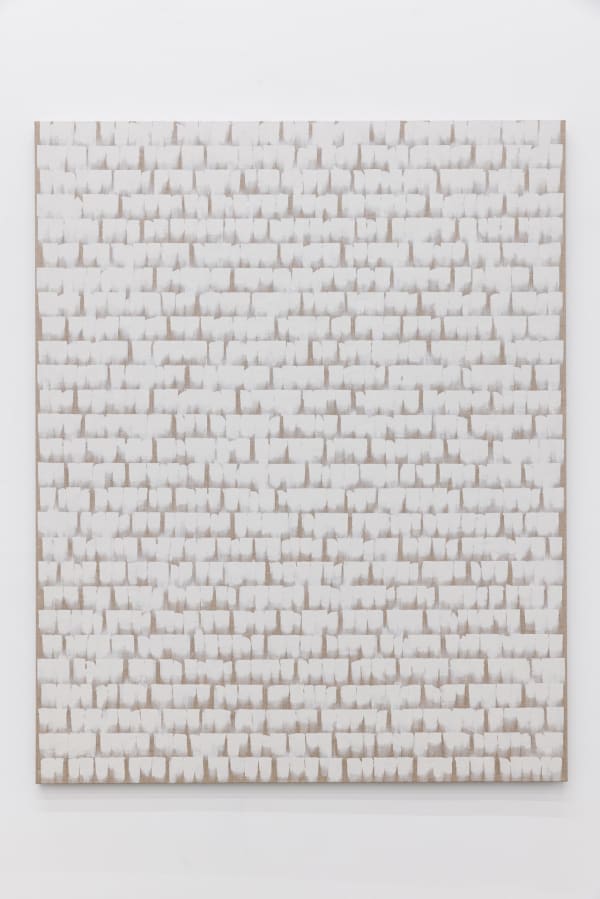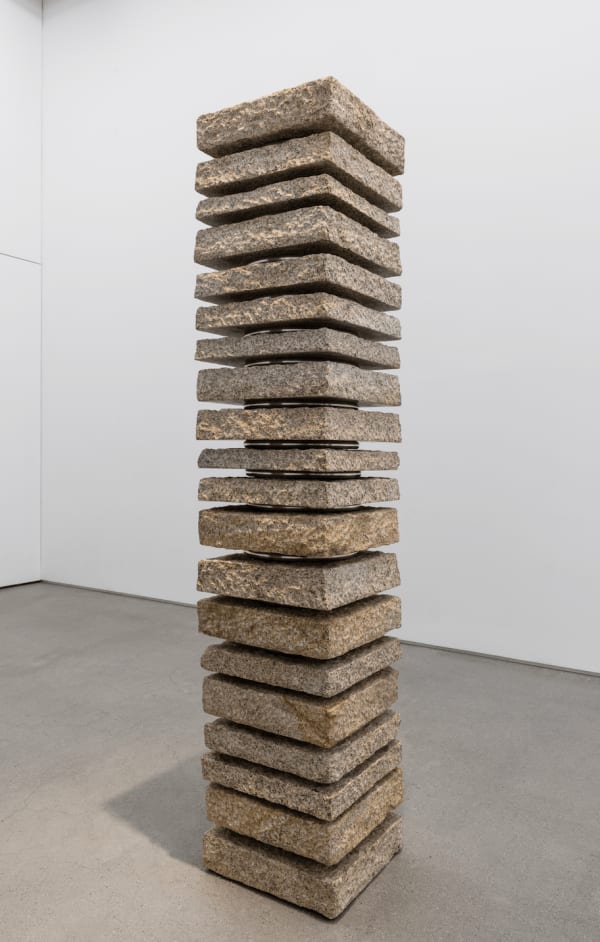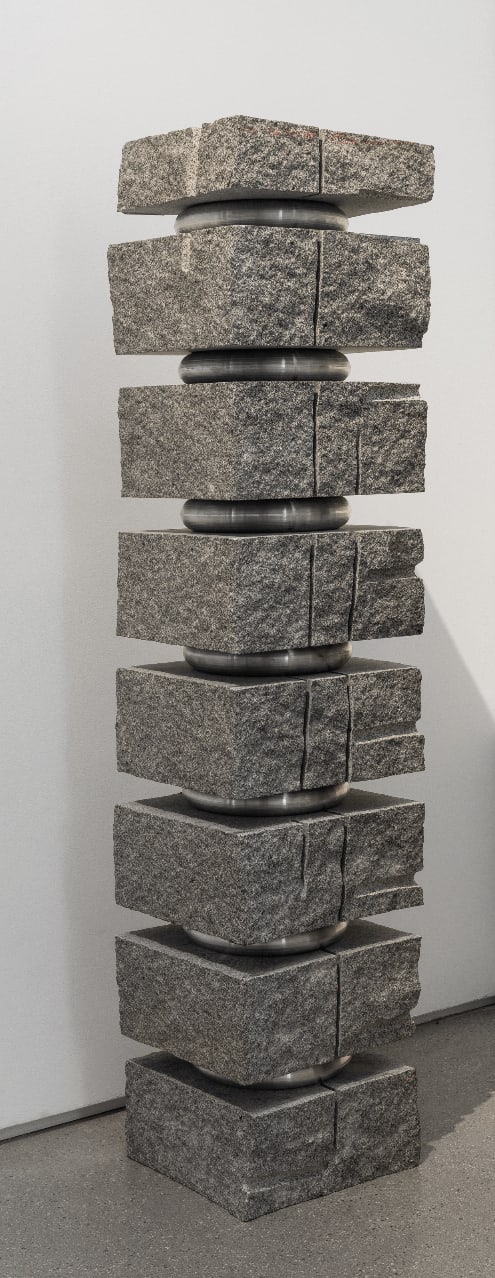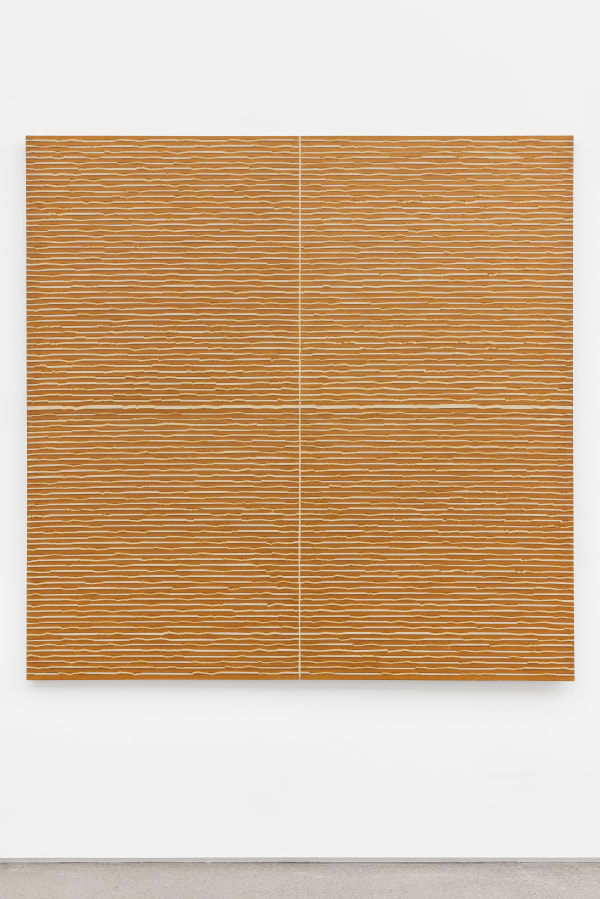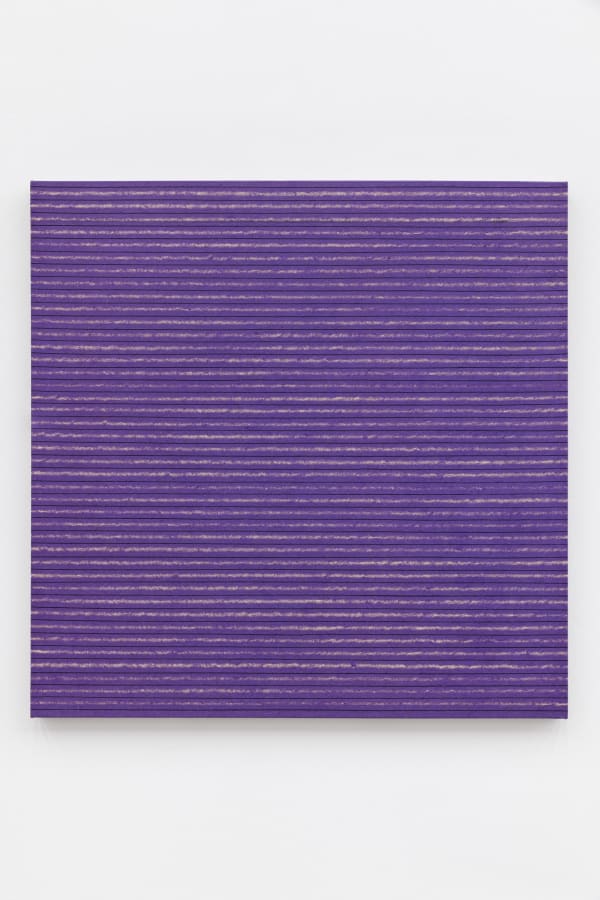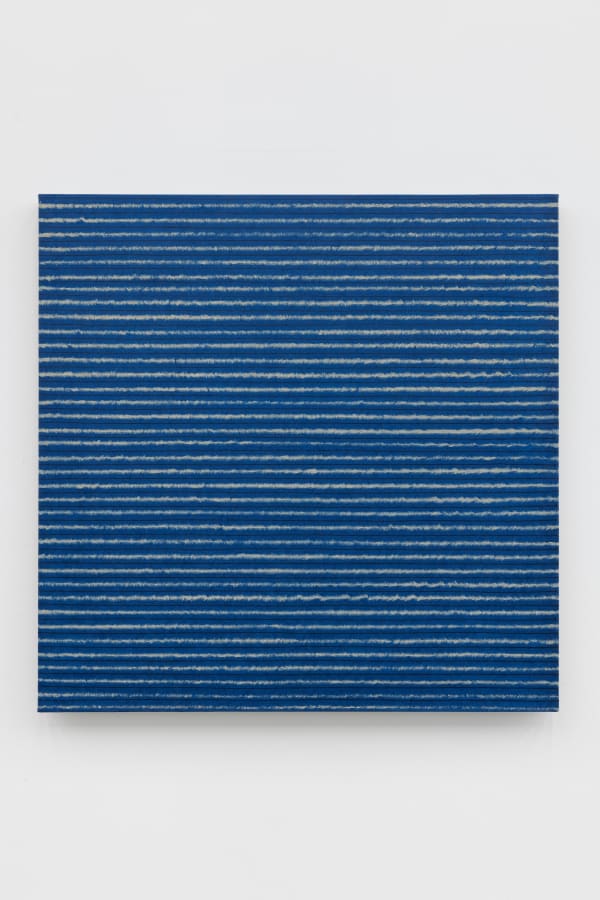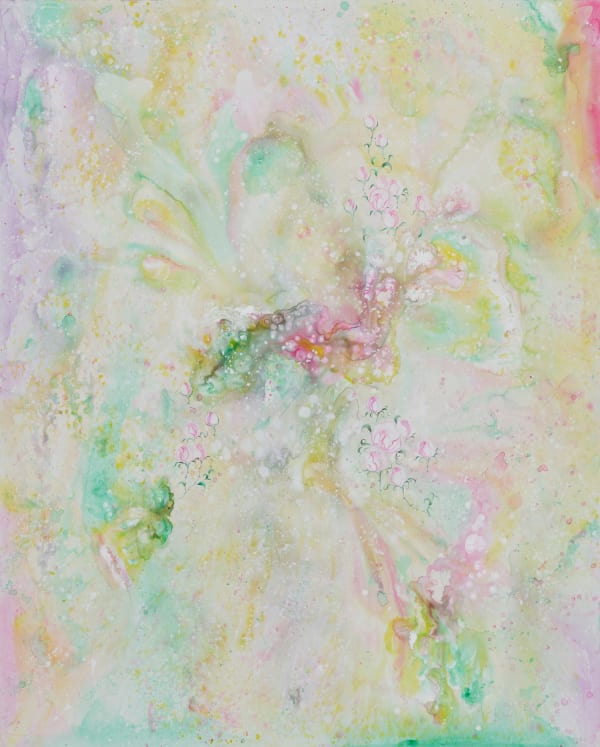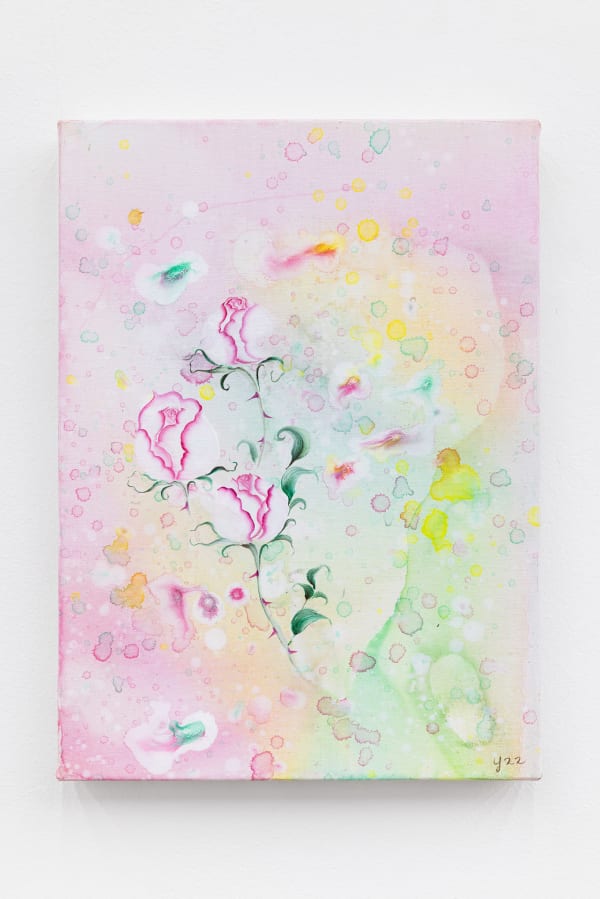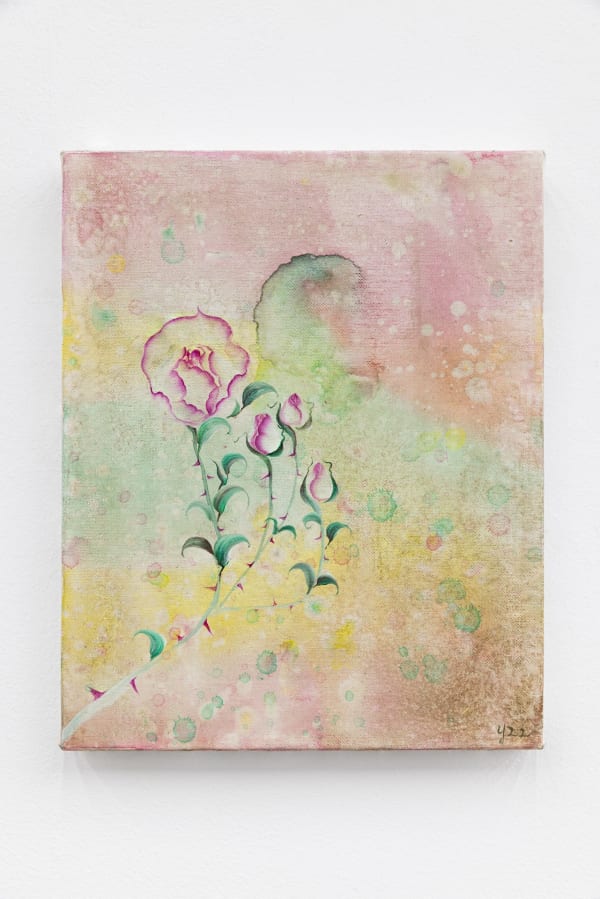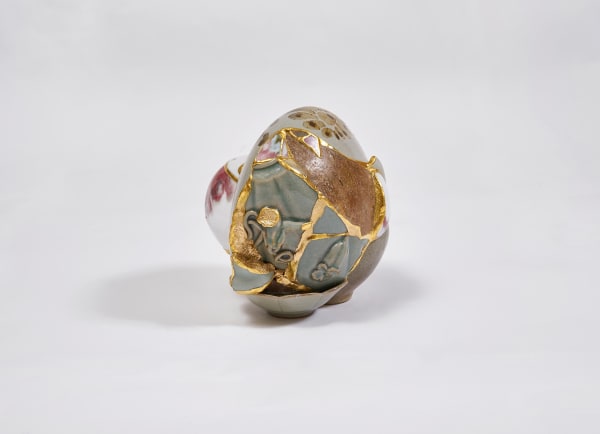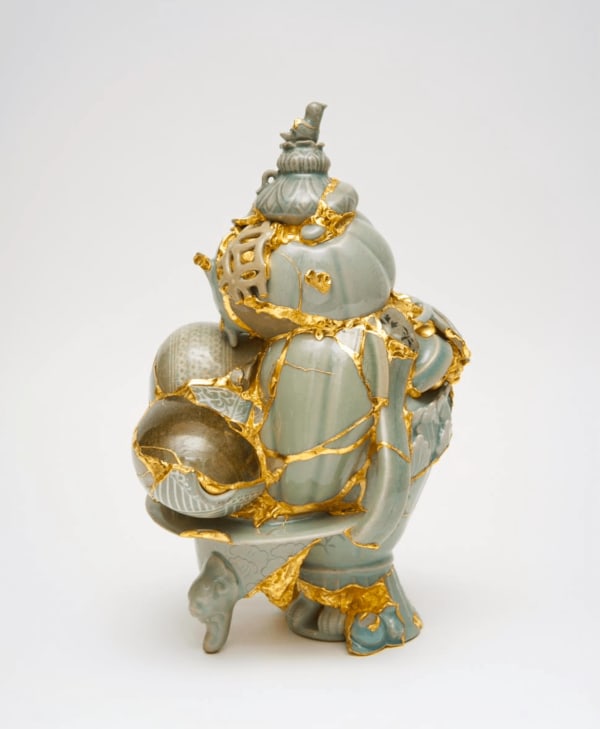-
The Page Gallery is participating in TEFAF Maastricht 2025, taking place from March 15 to 20 at MECC in Maastricht, Netherlands.
The Page Gallery will present a selection of works in the Modern & Contemporary Art section, featuring Choi Myoung Young, Park Suk Won, Yeesookyung, and Kuho Jung alongside rare Korean antique pieces dating from the 12th to 19th centuries.
A key highlight of the presentation is a large granite sculpture from Park Suk Won’s (b. 1942) renowned Accumulation series. Alongside Kuho Jung’s (b. 1962) Transparent Bandaji—a contemporary reinterpretation of the traditional Korean wooden furniture ‘Bandaji’, crafted from Plexiglas and brass hinges engraved with a traditional pattern by an artisan. Additionally, a 12th-century celadon lion-shaped incense burner, historically used at Goryeo Dynasty banquets, will be exhibited, bridging past and present.
The presentation will also feature Choi Myoung Young and Park Suk Won, founding members of the Association of Korean Avant-garde (A.G.) (1969–1975), who played a pivotal role in shaping Korean modern and contemporary art. In addition, works by Yeesookyung, one of Korea’s leading contemporary artists, will further enrich the dialogue between traditional and contemporary practices.
More information about the fair is available at tefaf.com -
-
Choi Myoung Young (b. 1941, Korea)
Born in Haeju, Hwanghae Province, North Korea, in 1941, Choi Myoung Young fled to South Korea during the Korean War at just 11 years old. His family was torn apart, and he and his brothers had to survive without their parents, living as displaced persons in Gunsan and Incheon. During his childhood, he became captivated by the conditions of human life—suffering, survival, asceticism, and salvation.
In 1960, he began studying painting at Hongik University College of Fine Arts, having previously trained under master artist Chung Sanghwa at the Incheon National School of Education. To Choi, the canvas is a conditioned space for painting—both a body and a metaphor for the conditions of existence.
As a result, he believed that a painter must accept the absolute flatness of the canvas as a rational foundation for painting, a conviction that became the starting point of his artistic practice. He joined two influential art groups, Origin (1963–present) and the Korea Avant-Garde Group (A.G., 1969–1975), both of which played significant roles in the development of modern and contemporary Korean art. Within these circles, he refined his artistic approach and philosophy.
His Conditional Planes series has been a defining element of his artistic journey since the 1970s. This style emphasizes the flat surface of the canvas, aligning him with Dansaekhwa (Korean monochrome painting), which is characterized by geometric compositions, simple and precise lines, and primary colors. During this period, Choi developed a unique technique that involved creating and erasing traces on the canvas using fingerprints and sandpaper.
By the mid-1970s, Choi's artistic approach took on a meditative quality. He began applying layers of paint with a roller in a manner reminiscent of a calligrapher completing a character with a single brushstroke. His work continuously explores the relationship between his body, the canvas, and the medium, repeating patterns until he achieves a meditative and spiritual rhythm akin to traditional East Asian literati painting.
After the mid-1980s, his compositions became defined by horizontal and vertical lines, forming layered surfaces through repeated brushstrokes. Choi has compared his artistic process to the Buddhist tradition of transcribing scriptures, suggesting that his painting is an act of self-discipline. Since then, he has continued his exploration of the plane as a painting space through his ongoing monochrome series, Conditional Planes.
Choi Myoung Young has participated in group exhibitions at the Guggenheim Museum, New York; the Hammer Museum, Los Angeles (2024); and the Tokyo Opera City Art Gallery, Japan (2017). His works are included in the collections of the Museum of Modern and Contemporary Art (MMCA), Seoul; the Seoul Museum of Art; the Leeum Samsung Museum of Art; and the National Art Center, Tokyo.
-
-
Park Suk Won (b. 1942, Korea)
Park Suk Won (b. 1942) is a leading figure in the history of contemporary Korean sculpture. As a founding member of the Korean Avant-Garde Group (AG, 1969–1975), he participated in the 5th Paris Biennale (1966) and the 10th São Paulo Biennale (1969). His works are held in the collections of prominent institutions, including the National Museum of Modern and Contemporary Art (MMCA, Korea), Daegu Art Museum (Korea), and Walkerhill Museum, among others.
Park Suk Won’s Accumulation series explores the potential of an oeuvre, seeking harmony between humanity and nature. Throughout this series, which began in the 1980s, he has employed techniques of "abstract-cutting" and "accumulation," primarily working with natural materials such as stone and wood.
In his pursuit of an unorthodox approach, Park Suk Won has distanced himself from traditional sculpting techniques, establishing a new trajectory for Korean abstract sculpture. Avoiding representational imagery, he immerses himself in simplified, abstract sculptural forms, ultimately questioning human existence.
The core concepts of “accumulation” and “repetition” extend into his two-dimensional works as well. Embracing the inherent qualities of natural materials, he vertically and horizontally layers traditional Korean paper (Hanji) onto canvas. Through repetition and reassembly, he underscores the intrinsic value of materials while expanding his artistic philosophy into painting.
In 1968 and 1969, while still in his twenties, he received awards for Scorched Earth (焦土) and Universe Misery (悲宇) from the Chairman of the National Assembly at the National Art Exhibition of the Republic of Korea. These accolades cemented his status as one of Korea’s most esteemed artists.
As a founding member of the Korean Avant-Garde Group (AG), he participated in the 5th Paris Biennale (1966) and the 10th São Paulo Biennale (1969). From 1993 to 2008, he served as a professor in the sculpture department at Hongik University. His most recent solo exhibitions were held at the Kim Se Choong Museum. His works are included in the collections of major institutions, including MMCA, GMoMA, Daegu Art Museum, Walkerhill Museum, and TMCA Complex, among others.
-
-
-
Yeesookyung (b. 1963, Korea)
Yeesookyung is one of the leading contemporary Korean artists, known for her unique artistic spectrum across various mediums, including installation, drawing, video, and performance.
Her most acclaimed series Translated Vase originated from her fascination with fragments, which began after visiting a Korean pottery master in 2001. These masters, obsessed with achieving perfection, would routinely destroy any pieces that exhibited even the slightest flaws. Yeesookyung’s research focuses on these broken and discarded fragments, interpreting them as expressions of stress released from the vulnerability of completeness.
She actively intervenes in this state, combining different fragments into intricate structures and sealing the cracks with gold. These works, resembling puzzles, gain entirely new narratives. In Korean, the words for ‘gold,’ ‘flaw,’ and ‘crack’ all share the same pronunciation—geum. As a result, the fragments, connected and layered with geum, ultimately take on an organic form that cannot be predetermined.
Her Oh, Rose! series (2022–ongoing) serves as a continuation of her Past Life Regression Painting series (2014–ongoing). This body of work emerged from the artist’s experiences undergoing past life regression under hypnosis, guided by a professional hypnotherapist, in search of new painting subjects. In this series, the rose becomes a central motif, enabling Yeesookyung to transcend the constraints of space and time and access the unconscious realm, where new narratives unfold. Set against a mysterious abstract backdrop reminiscent of the aurora borealis, the blooming rose hovers at the threshold between past and present lives, the conscious and unconscious, and the abstract and figurative.
Furthermore, Yeesookyung believes that the rose’s auspicious symbolism adds depth to the series. In East Asian cultures, the rose has long been associated with a beautiful, bewitching woman or a flower that blooms throughout all four seasons. The phrase “四季長春” conveys a benevolent wish for perpetual warmth and comfort, much like an eternal spring.
Like Translated Vase, which finds meaning in the artistic reinterpretation of cracked and discarded ceramics, this series evokes themes of psychological recovery and rebirth. “To me, roses mean ‘light’ and ‘life,’ and I hope that the energy created by these tiny lives blooming in the light of the aurora borealis can be felt,” says Yeesookyung, who envisions the series as a space of healing infused with the vitality of roses.
Yeesookyung’s works are held in the permanent collections of institutions including The British Museum, London, UK; the Los Angeles County Museum of Art, USA; the Seoul Museum of Art, Korea; the Salama Bint Hamdan Al Nahyan Foundation, Abu Dhabi, UAE; M+ Museum, Hong Kong; Mystetskyi Arsenal, Kyiv, Ukraine; the Museum of Fine Arts, Boston, USA; the National Museum of Contemporary Art, Korea, Gwacheon; Leeum, Samsung Museum of Art, Seoul; the ARCO Collection, IFEMA, Madrid, Spain; and the Bristol Museum, Bristol, UK.
-
-
-
Kuho Jung (b. 1962, Korea)
After studying communication design at Parsons School of Design in New York, Kuho Jung returned to Korea and launched his fashion brand, KUHO, based on the philosophy of Korean minimalism. He later joined Samsung’s fashion division as a creative director, managing over ten brands for ten years. Expanding his creativity into the film industry, he won several art director and best costume design awards. He is actively involved in performance art, directing and writing various works. In 2019, his curation of an exhibition on contemporary Korean crafts for Milan Design Week was recognized as one of the top ten exhibitions of the week. In 2022, he played a key role in renewing the Samsung Leeum Museum of Art and the Hoam Museum of Art, serving as an art director.
His Bandaji series explores the balance between the fading and the excessive. Traditional craftsmanship, despite its enduring artistry and technical mastery, is gradually losing its function and relevance. In contrast, modern objects are mass-produced and consumed at an unprecedented pace, often devoid of intrinsic value. Coexistence is an artistic exploration of these opposing forces, seeking a new equilibrium where the disappearing and the excessive converge.
By integrating transparent plexiglass with traditional metal ornaments, the reinterpretation of the Pyeongyang Bandaji (Korean chest) visually articulates the tension and harmony between absence and abundance. This work goes beyond mere aesthetic reinterpretation—it explores the intersections of tradition and modernity, emptiness and presence, proposing new possibilities for utility and meaning in contemporary design and art.
Kuho Jung has held multiple solo exhibitions, including the Bandaji series at Choeunsook Gallery in Seoul. His work explores the intersection of tradition and modernity, blending historical craftsmanship with contemporary aesthetics. He has also served as a creative director for major craft exhibitions and institutions such as the Leeum Samsung Museum of Art.
His influence extends to film and stage, where he has directed and designed costumes for acclaimed productions like Hwang Jin-yi and The Scent of Ink. Recognized for his contributions to fashion and design, he has received prestigious awards, including the Korea Fashion Awards Presidential Commendation. His artistic vision continues to shape Korea’s cultural landscape, bridging heritage with innovation across multiple disciplines.
-
ARTISTS
TEFAF Maastricht 2025: BOOTH 476
VIP Preview: 13 – 14 MARCH
Public: 15 – 20 MARCH
Current viewing_room
